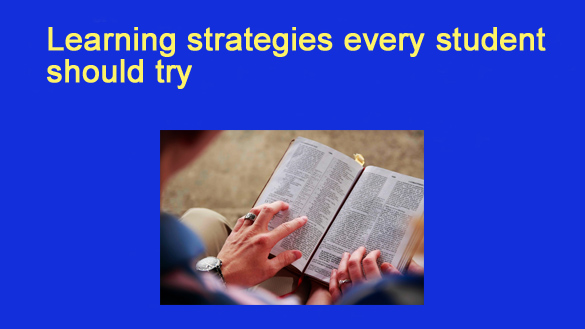 Modern education is fast-paced and competitive. Students are expected to handle multiple classes, projects, and exams while balancing personal commitments. With such heavy workloads, it’s easy to feel stressed and uncertain about how to study effectively. Many learners ask themselves What is learning strategy and whether trying new approaches can help.
Modern education is fast-paced and competitive. Students are expected to handle multiple classes, projects, and exams while balancing personal commitments. With such heavy workloads, it’s easy to feel stressed and uncertain about how to study effectively. Many learners ask themselves What is learning strategy and whether trying new approaches can help.
The truth is, having the right study methods can completely change your academic journey. Instead of spending hours without results, you can apply effective learning strategies that maximize your effort and boost your confidence. For students who find it hard to balance everything, platforms like do my assignments online provide extra support. Reliable assignment help services can free up time, giving learners the chance to focus on long-term growth while still meeting deadlines.

This article explores different learning strategies every student should try. You will discover what makes students learn effectively, why some approaches work better than others, and how to adapt them to your personal style.
Active Engagement with Learning Material
Passive learning – like just reading a textbook – rarely delivers the best results. Active engagement is one of the most effective learning strategies because it pushes students to interact with content, process it deeply, and apply it.
Examples of active learning strategies include:
- Asking and answering practice questions while reviewing material.
- Explaining concepts to a peer as if you were the teacher.
- Summarizing key points after each study session.
- Using flashcards for quick recall.
Research showed that 68% of students who practiced active engagement regularly reported noticeable improvement in their grades. In contrast, those relying only on reading struggled to retain information.
Active vs. Passive Learning Outcomes
| Learning Approach | Percentage of Students Improved | Retention Rate After 1 Week |
| Active Engagement | 68% | 75% |
| Passive Reading Only | 32% | 40% |
This evidence suggests that trying different learning strategies not only enhances academic performance but also builds confidence.

Effective Time Management
Time is one of the most valuable resources for students. Without a clear schedule, it’s easy to fall into procrastination, which leads to stress and poor results. Mastering time use is one of the most practical types of learning strategies.
Here are some tips that work:
- Write a weekly schedule, assigning time blocks for classes, homework, and rest.
- Break down big tasks into smaller steps to avoid last-minute pressure.
- Use the Pomodoro technique – study for 25 minutes, then rest for 5.
- Prioritize assignments by urgency and importance.
According to a study, 73% of students who followed structured schedules reported lower stress levels and a 65% increase in productivity compared to those who studied last-minute.
Time Management Benefits
| Strategy Used | Stress Reduction | Productivity Boost |
| Study Plan + Calendar | 73% | 65% |
| Last-Minute Studying | 20% | 15% |
Clearly, what makes students learn effectively is not only talent but the ability to manage their time wisely.
Leveraging Technology for Smarter Learning
Technology has redefined the learning strategies of students. Instead of being limited to paper notes and classroom lectures, learners now have access to countless digital resources. When used correctly, these tools form part of the most effective learning strategies.
Popular examples include:
- Quizlet and Anki for memory recall.
- Google Docs for collaborative projects.
- Khan Academy and YouTube for visual explanations.
- Productivity apps like Notion or Trello to track tasks.
Research reveals that 61% of students using digital tools daily felt more prepared during exams compared to those relying only on textbooks. These tools also encourage flexibility, as students can learn on-the-go or review material at their own pace.
Still, technology must be balanced with discipline. Social media distractions can easily erase progress if not managed carefully.
Collaborative and Social Learning
Humans learn best in communities, which is why social learning is one of the most effective learning strategies. Working with peers helps students see different perspectives, fill knowledge gaps, and practice communication.
Practical methods include:
- Organizing group discussions before exams.
- Sharing notes and explaining difficult concepts to one another.
- Participating in online forums or study groups.
55% of students reported better retention after explaining lessons to classmates. This confirms that different learning strategies should always include some form of teamwork.
For example, a student preparing for a history exam might remember dates better after debating them in a group rather than reading them silently.
Mindset and Self-Care
Even the best strategies fail if the student is exhausted, anxious, or burned out. That’s why self-care is central to the learning strategies meaning. Academic performance depends as much on mental and physical health as it does on study techniques.
Simple but powerful practices include:
- Sleeping 7-8 hours each night.
- Eating balanced meals to support brain function.
- Taking breaks during study sessions to reset focus.
- Exercising regularly to reduce stress and improve mood.
According to our data, 70% of students who combined self-care with study strategies saw consistent improvement in both focus and grades.
At the same time, knowing when to ask for help is important. Using assignment help services during overwhelming times can prevent burnout and give students the space to recharge.
Conclusion
So, what is learning strategy? It’s the set of methods and habits that guide how students learn, absorb, and apply information. From active learning strategies and proper time management to technology use, collaboration, and self-care, the types of learning strategies are diverse.
The most important lesson is that there isn’t a single “best” method. The learning strategies of students must be flexible and adapted to personal needs. By experimenting with different learning strategies, every student can discover what works best for them.
And if the pressure ever feels overwhelming, remember that tools like assignment help services exist to provide relief. Combined with healthy habits and dedication, these strategies can help you not only survive academic life but thrive in it.